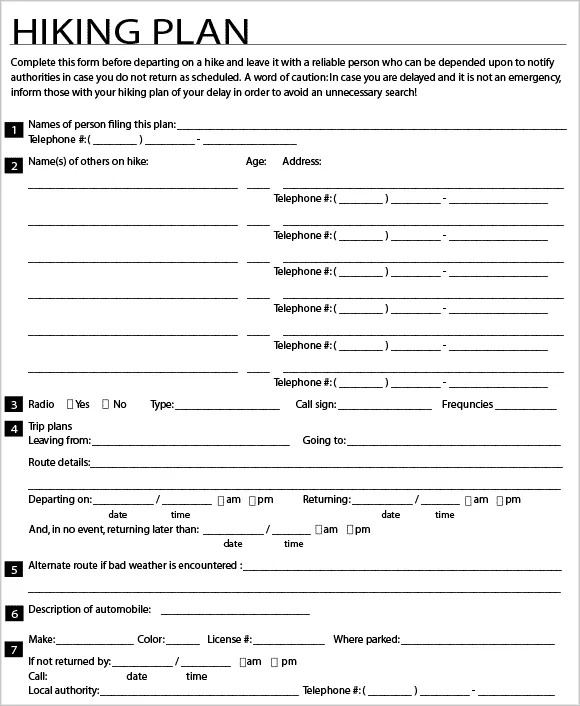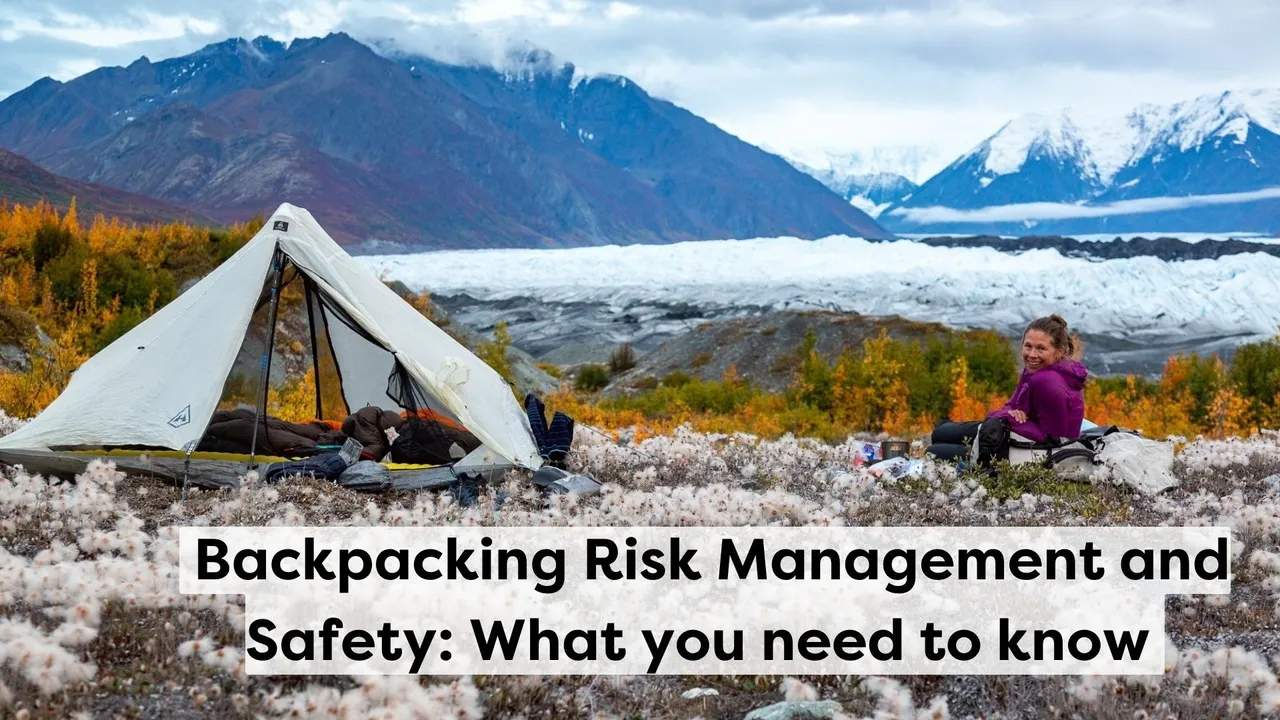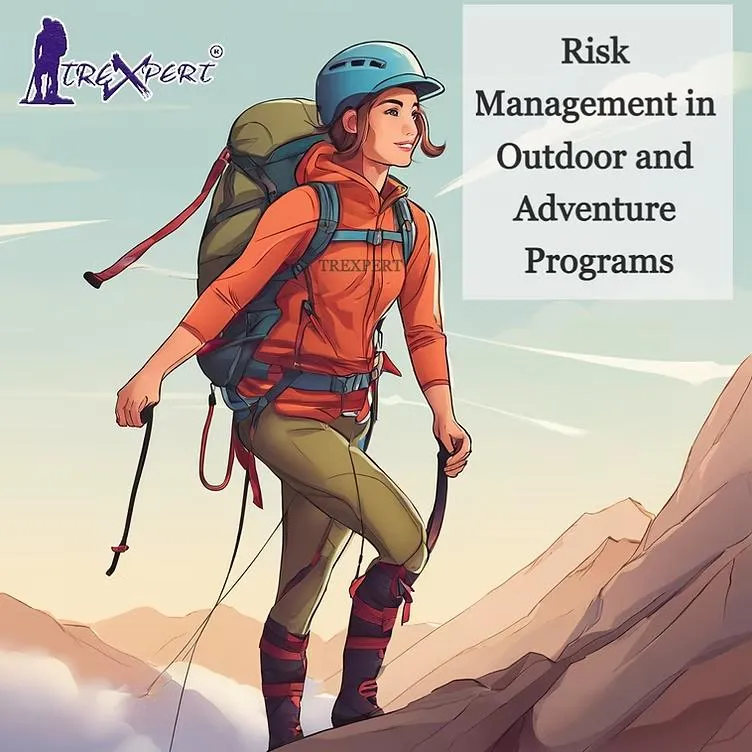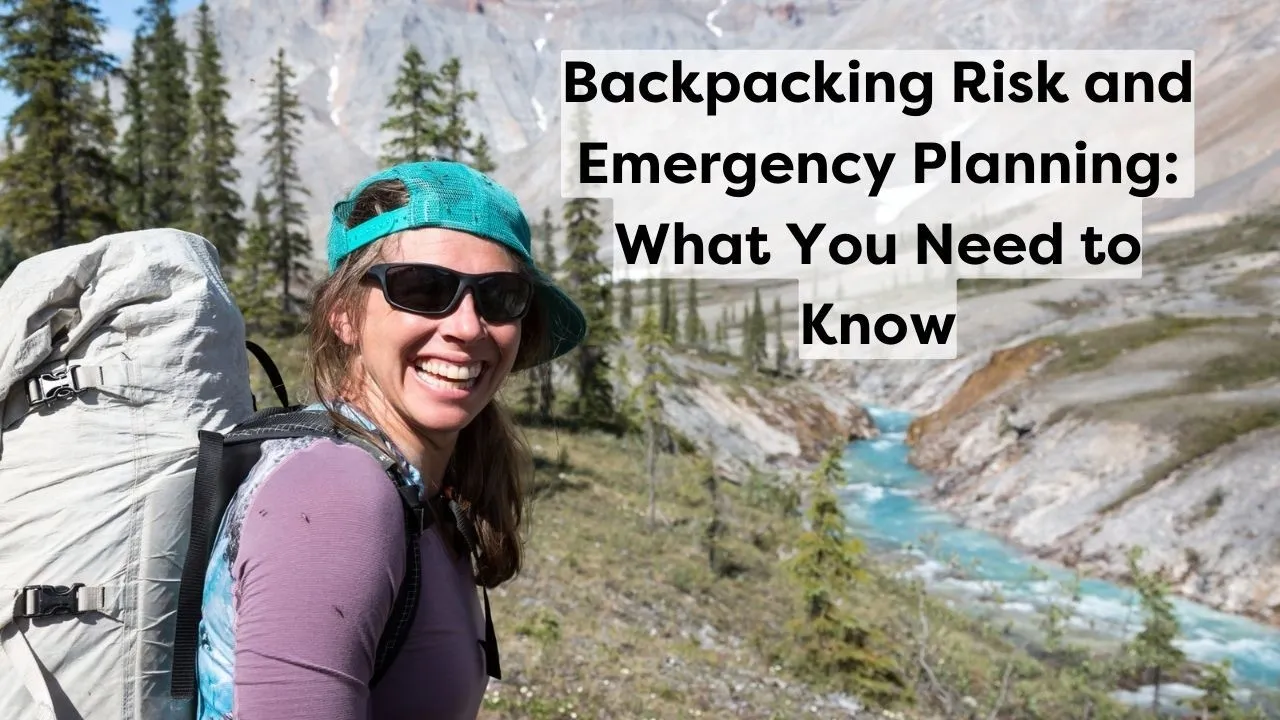
The Complete Guide to Hiking Trip Risk Assessment: Expert Safety Strategies for Every Adventure
After two decades of leading wilderness expeditions and conducting hundreds of hiking adventures, I've learned that proper hiking trip risk assessment is the difference between memorable adventures and dangerous situations. This comprehensive guide shares proven strategies, practical tools, and expert insights to help you evaluate, mitigate, and manage risks on every trail.
Understanding Hiking Trip Risk Assessment Fundamentals
A hiking trip risk assessment is a systematic process of identifying, evaluating, and managing potential hazards that could impact your safety, enjoyment, or success on the trail. During my years as a wilderness guide, I've witnessed how proper risk assessment transforms nervous beginners into confident adventurers and prevents experienced hikers from making costly mistakes.
The foundation of effective hiking trip risk assessment lies in understanding that risk exists on a spectrum. I remember leading a group through Colorado's San Juan Mountains where what seemed like a straightforward day hike turned challenging when afternoon thunderstorms rolled in earlier than forecasted. Our pre-trip risk assessment had identified weather as a moderate risk, and our mitigation strategies—including early start times and designated turnaround points—kept everyone safe.
Expert Insight
"Risk assessment isn't about eliminating all dangers—that's impossible. It's about making informed decisions with full awareness of potential consequences and having contingency plans ready." - Based on 20+ years of wilderness leadership experience

Proper planning reduces risks and enhances adventure enjoyment
The Three Pillars of Hiking Risk Assessment
1. Identification
Systematically identifying all potential hazards, from obvious dangers like cliff edges to subtle risks like dehydration or group dynamics issues.
2. Evaluation
Assessing the likelihood and potential severity of each identified risk, considering factors like experience level, conditions, and group dynamics.
3. Mitigation
Developing and implementing strategies to reduce, eliminate, or manage identified risks through preparation, gear, techniques, and decision-making.
Essential Safety Gear for Risk Management
Professional-grade first aid kit recommended by wilderness guides
View on Amazon - $39.00Pre-Trip Planning: The Foundation of Safe Adventures
Effective hiking trip risk assessment begins long before you step onto the trail. I've learned through experience—including a memorable rescue situation in Montana's Glacier National Park—that thorough pre-trip planning is your first and most important line of defense against wilderness hazards.
Research and Route Selection
Before committing to any trail, I spend considerable time researching current conditions, recent trip reports, and potential challenges. Understanding trail difficulty ratings is crucial, but don't rely solely on guidebook descriptions—they often don't reflect current conditions or seasonal variations.
Pre-Trip Research Checklist
- Current weather forecasts and extended outlook
- Trail conditions and recent closure reports
- Water availability and treatment requirements
- Permit requirements and regulations
- Emergency contact information and evacuation routes
- Recent trip reports and ranger updates
Group Assessment and Preparation
One of the most critical aspects of hiking trip risk assessment involves honestly evaluating your group's capabilities. I've seen well-meaning friends push beyond their limits, creating dangerous situations for everyone. Group hiking safety principles must be established before departure.
Group Capability Questions
- What's the fitness level of the least experienced member?
- Does everyone have appropriate gear and experience?
- Are there any medical conditions or limitations?
- What's the group's experience with the planned terrain?
- How does the group handle stress and difficult decisions?
Expert Adventure Safety Planning
Professional insights on creating effective adventure safety plans
Emergency Signaling Equipment
Titanium Emergency Whistle - 120dB
$29.99 - Buy Now5-in-1 Survival Whistle Kit
$9.99 - Buy NowIdentifying Trail Hazards: A Comprehensive Approach
Comprehensive hiking trip risk assessment requires understanding that hazards exist in multiple categories. During my wilderness guiding career, I've developed a systematic approach to hazard identification that has prevented countless incidents. The key is looking beyond obvious dangers to identify subtle risks that often catch experienced hikers off-guard.
I remember a seemingly perfect day in Utah's Zion National Park where rising temperatures created flash flood conditions in slot canyons miles away. Our morning risk assessment had flagged weather as low risk, but continuous monitoring revealed changing conditions that required route modifications. This experience reinforced the importance of dynamic risk assessment throughout any adventure.
Pro Tip: Essential safety gear selection should be based on your specific risk assessment, not generic packing lists. Every trail presents unique challenges requiring tailored preparation.

Systematic risk identification prevents accidents
Environmental and Terrain Hazards
Terrain Risks
- Unstable rock and loose scree
- Cliff edges and exposure
- River crossings and water hazards
- Snow and ice conditions
- Avalanche-prone slopes
Weather Hazards
- Sudden weather changes
- Lightning and thunderstorms
- Flash flood potential
- Extreme temperatures
- High UV exposure at altitude
Wildlife Encounters
- Bear encounters and food storage
- Venomous snakes and spiders
- Aggressive wildlife during mating seasons
- Insect-borne diseases
- Protective parent animals
Human Factors
- Physical fitness limitations
- Medical conditions and medications
- Poor decision-making under stress
- Inadequate experience or skills
- Group dynamics and communication
Essential Risk Assessment Tools
Professional Survival Kit - 125 Pieces
Complete emergency kit with first aid supplies, survival tools, and navigation equipment. Perfect for comprehensive risk mitigation.
Get Kit - $124.64When hiking solo, your risk assessment becomes even more critical. I've learned that solo hikers must be more conservative in their risk tolerance and always have redundant safety systems.
"Solo hiking requires a different mindset—you're both the leader and the follower, responsible for every decision."
Risk Evaluation and Priority Matrix
Once you've identified potential hazards, the next step in effective hiking trip risk assessment is evaluating and prioritizing these risks. I use a systematic approach that considers both probability and impact, allowing for informed decision-making about which risks require immediate attention and which can be managed through standard precautions.
Risk Assessment Matrix
| Probability → Impact ↓ |
Low | Medium | High |
|---|---|---|---|
| High Impact | MEDIUM | HIGH | CRITICAL |
| Medium Impact | LOW | MEDIUM | HIGH |
| Low Impact | LOW | LOW | MEDIUM |
Priority Action Guide
- CRITICAL Avoid or implement multiple mitigation strategies
- HIGH Develop specific mitigation plan
- MEDIUM Monitor and prepare contingencies
- LOW Standard precautions sufficient
Real-World Example: Colorado 14er Assessment
Mount Elbert - July Ascent
Afternoon Thunderstorms:
Altitude Sickness:
Trail Getting Lost:

Emergency planning reduces critical risks
Professional Navigation & Safety Equipment
Complete 75-piece survival kit with navigation tools, first aid supplies, and emergency equipment
Order Complete Kit - $89.23Risk Mitigation Strategies and Practical Tools
The final component of comprehensive hiking trip risk assessment involves developing and implementing specific mitigation strategies for identified risks. Throughout my guiding career, I've learned that the most effective approach combines preparation, equipment, techniques, and decision-making protocols. The goal isn't to eliminate all risks—that's impossible—but to reduce them to acceptable levels.
Personal Preparedness
- Physical Conditioning: Train specifically for your planned adventure, focusing on endurance, strength, and flexibility
- Skills Development: Master essential techniques like navigation, first aid, and weather assessment
- Mental Preparation: Develop decision-making frameworks and stress management techniques
- Experience Building: Gradually progress to more challenging objectives
Equipment Solutions
- Redundant Systems: Carry backup navigation, communication, and safety equipment
- Weather Protection: Layer systems and emergency shelter options
- Medical Supplies: Comprehensive first aid kit tailored to group size and risks
- Communication Devices: Satellite communicators for emergency situations
Route Management
- Bail-out Options: Identify multiple exit points and escape routes
- Conservative Timing: Build buffer time into itineraries
- Alternative Routes: Plan easier options for challenging conditions
- Turnaround Times: Establish non-negotiable decision points
Dynamic Risk Management During Your Adventure
Effective hiking trip risk assessment doesn't end when you start hiking. I've learned that continuous monitoring and adaptive decision-making are essential for safety. Conditions change, group dynamics evolve, and new information becomes available throughout any adventure.
Key Decision Points
- Morning weather and condition assessment
- Midday progress and energy level check
- Afternoon weather monitoring and turnaround decisions
- Evening camp selection and next-day planning
- Continuous group health and morale assessment
I remember a multi-day trek in Washington's Olympic Mountains where our morning risk assessment showed acceptable conditions, but by afternoon, deteriorating weather and one group member's developing knee pain required route modifications. Our pre-established decision-making framework allowed for quick, safe choices without group conflict.
Hourly Risk Assessment Checklist
Any "No" answer requires discussion and potential plan modification
Personal Experience
"The best risk assessment is worthless without the courage to act on it. I've turned back from summits, shortened trips, and changed routes when conditions demanded it. Every time, it was the right decision."
Emergency Action Protocols
Communication Plan
- Emergency contact numbers
- Satellite communicator protocols
- Signal mirror and whistle procedures
- Location coordinates ready
Medical Response
- First aid priorities (ABC)
- Evacuation procedures
- Group member assignments
- Medical history awareness
Navigation Backup
- Multiple navigation methods
- Escape route knowledge
- Shelter construction skills
- Group stay-together protocols
Conclusion: Your Path to Safer Adventures
Mastering hiking trip risk assessment is an ongoing journey that enhances both safety and enjoyment in the wilderness. Throughout my decades of leading adventures, I've learned that the most successful and memorable trips are those where risks are identified, evaluated, and managed proactively rather than reactively.
Remember that effective risk assessment isn't about avoiding all risks—that would eliminate the adventure entirely. Instead, it's about making informed decisions with full awareness of potential consequences and having robust plans to manage whatever challenges arise. The framework presented in this guide provides a systematic approach to wilderness safety that scales from day hikes to multi-week expeditions.
Your Action Plan
- Start with your next planned hike: Apply the risk assessment matrix to identify and prioritize potential hazards
- Build your skills systematically: Focus on areas where your risk assessment reveals knowledge gaps
- Develop your emergency protocols: Practice communication procedures and emergency responses
- Invest in appropriate gear: Prioritize equipment that addresses your highest-priority risks
- Share your knowledge: Help others develop their risk assessment capabilities
The wilderness will always present challenges and uncertainties—that's part of what makes outdoor adventures so rewarding. By approaching these challenges with systematic risk assessment, proper preparation, and adaptive decision-making, you'll find that your confidence grows alongside your capability to handle whatever the mountains throw at you.
Continue Learning
Explore more wilderness safety topics:

Proper planning leads to successful adventures
Safe Adventures Start Here
Twenty years of wilderness experience has taught me that the best adventures are safe adventures. Every risk assessment you conduct, every mitigation strategy you implement, and every decision you make with safety in mind opens the door to more incredible experiences in the wilderness.
The mountains are calling—answer them safely.

